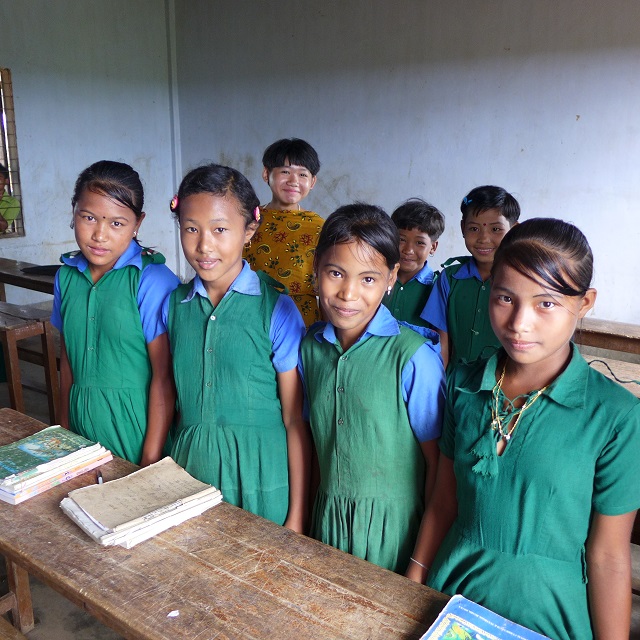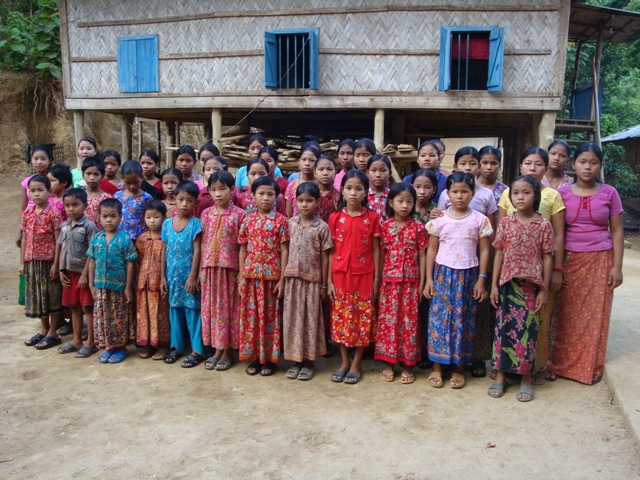Programs: Bangladesh
Educating Girls in Bangladesh
Buddhism flourished in Bangladesh between the fourth and eleventh centuries, with thousands of monks resident in hundreds of monasteries throughout the land. Today Buddhists are less than one percent of a predominantly Muslim population. The Buddhist population is comprised of two groups: “plains” Buddhists, who are generally surnamed Barua, and “hilly” Buddhists, who belong to the Chakma, Marma, Tripura, Tongchengya, and other tribal groups.
Girls in developing countries face many challenges in their pursuit of education. One of the greatest challenges for women is inadequate preparation at the primary level. The poor quality of schooling hampers girls in pursuing secondary and higher education. Another challenge is financial. Parents are unable to afford to buy uniforms and books to enable their children to attend school. If parents can only afford to send one child to school, they will usually send a son. Only recently are girls getting opportunities to study and many of them are only able to complete a few years of school.
Since 2001, Jamyang Foundation has founded three schools for Marma tribal girls in remote areas of the Chittagong Hill Tracts. These schools were established in Buddhist tribal areas which are experiencing extreme economic hardship and are under threat of cultural extinction. The schools have greatly improved girls’ perceptions of what they can achieve educationally, socially, and spiritually.
The Jamyang Foundation schools are providing unprecedented opportunities to girls who would otherwise be deprived of an education in an area where girls and young women are highly vulnerable to sex trafficking. The schools have become very popular among the local people, because the teachers hold regular classes and show loving kindness for their students. The local villagers are now helping support the school. Everyone agrees that educating girls is the best way of protecting them against trafficking and other dangers.
Mahamaya School
In 2003, Mahamaya School began in a small village in Rajasthali with 17 students who were five and six years old. In 2005, the number of students increased to 35. In 2005, the number of students increased to 35. A new class has been added each year, as new students are admitted, . There are currently 85 students altogether.
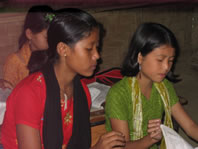
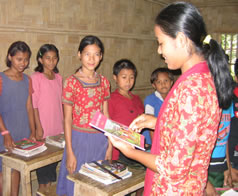
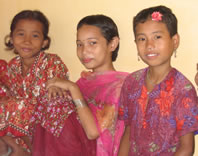
Visakha School
Visakha School was established in 2006 by villagers in Manikchari, Khagrachari District with the help of Jamyang Foundation. The school began with 38 students in two classes. In 2007, the number of students increased to 60. By 2015, the school offered the girls education up to Grade 5 and started a “play group” to prepare younger children for school. Currently, there are 116 girls studying at the school. Jamyang Foundation provides school lunches and put in a water system to supply the children with clean drinking water.
Yasodhara Girls’ School
Yasodhara Girls’ School is located in a small temple in the remote village of Ruma in Bandarban. The students are from extremely poor families in remote villages far from Ruma. The girl’s health and studies have improved greatly since receiving more nutritious meals provided by Buddhist Global Relief in 2015. They are happy to be able to attend classes without interruption, since they now have a cook to prepare the student lunches. The aim of the project is to help students as much as possible by giving them a safe place to live, providing free nutritional meals, and giving educational opportunities in a loving and caring environment to nurture their proper mental and physical development.

